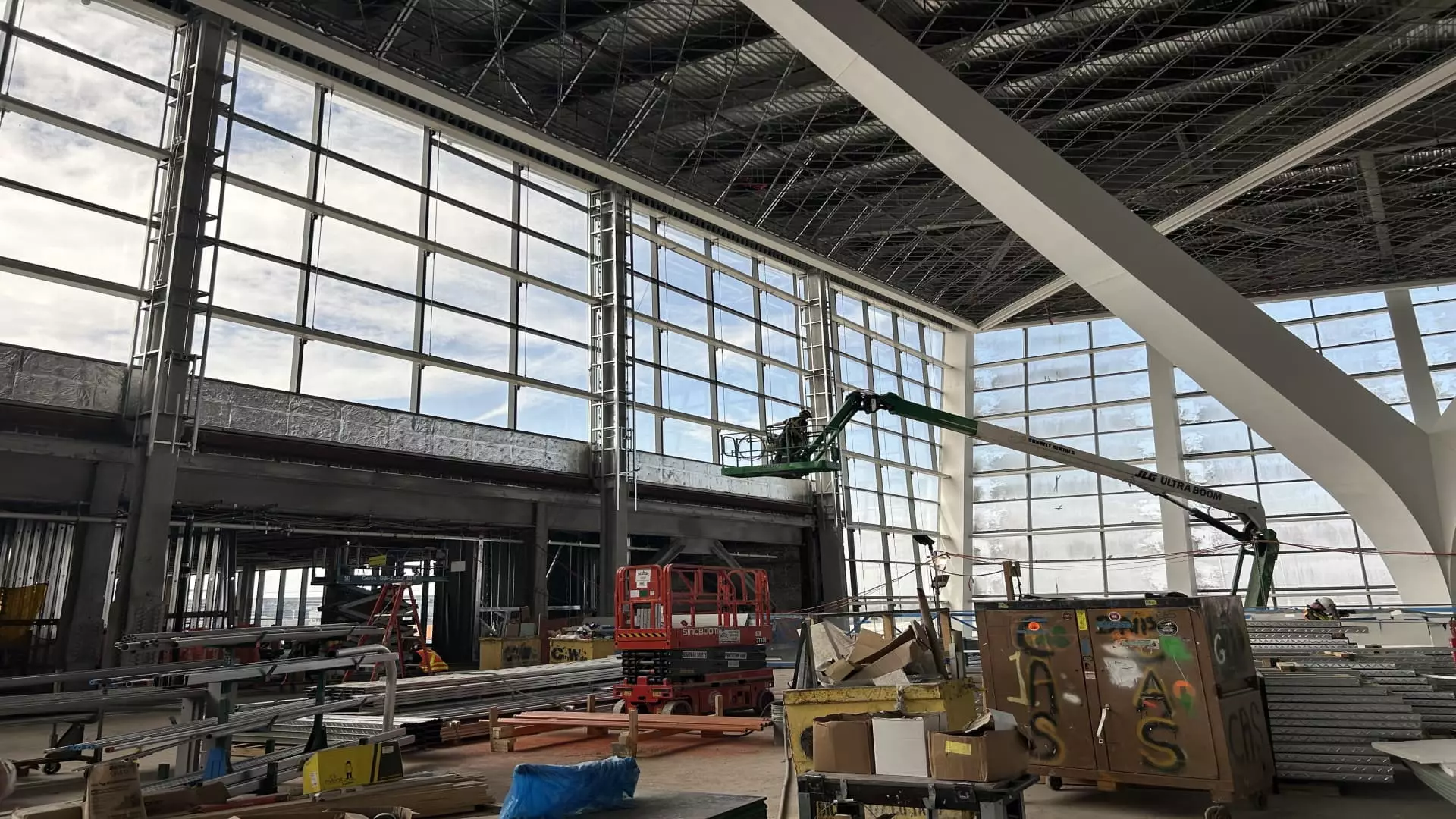New York’s JFK Airport is poised on the brink of a revolution that promises to elevate its stature on the world stage—if the substantial investments are realized as intended. The construction of Terminal 1, costing an eye-watering $9.5 billion, signals an ambition attributable to a global city that refuses to accept mediocrity in its infrastructure. This terminal aims to serve as a gleaming beacon for international travelers, encapsulating the modern ethos of efficiency, mass capacity, and aesthetic sophistication.
However, lofty goals rarely translate seamlessly into flawless execution. The project’s sheer scale, cost, and complexity suggest it will be a double-edged sword: a transformative force capable of revitalizing JFK into a seamless gateway or a burdensome monument to overreach. The timing—launching around the 2026 World Cup—seems strategic, aligning with a global spotlight meant to herald New York’s rebirth as a premier international hub. But as many mega projects have shown, the chasm between in-progress prestige and post-completion functionality remains wide.
The design, inspired by architectural ingenuity, strives to conjure images of flight and light—evoking the image of a butterfly—yet it raises questions about whether form will ultimately triumph over function. Structural promises like flooded natural light and centralized customs are commendable on paper. But will they withstand the practical realities of airport delays, maintenance, and the unpredictable chaos that characterizes large transportation hubs? Only time can tell if these visionary ideas translate into tangible improvements or if they become hollow symbols of superficial progress.
Financial Overreach and Political Ramifications
Behind the sleek facade of this project lies an undeniable sense of financial risk. When the airport relies on a $19 billion overhaul for JFK—almost double the investment at LaGuardia—the stakes escalate exponentially. The colossal cost begs the question: is this expenditure justified, or is it a political vanity project designed to signal strength and modernity rather than pragmatic necessity?
The massive investments are driven, in part, by a perception that aging infrastructure hampers growth and diminishes New York’s competitive edge. While the need for infrastructure renewal is unarguable, the risk resides in whether these projects are managed efficiently or whether they become labyrinthine endeavors plagued by delays, budget overruns, and bureaucratic inefficiencies.
Moreover, the timing of these upgrades appears strategically linked to political calculations—such as leveraging international attention during global events like the World Cup. While this can bolster a city’s image, it also risks turning infrastructure upgrades into public relations stunts if the foundational elements falter in delivering true value.
Politics inevitably intertwine with large-scale infrastructure projects. Funding disputes, local opposition, and changing priorities can unravel the rosy picture painted by planners. For JFK’s Terminal 1, the question remains whether this investment truly aligns with the future needs of the American aviation industry or if it’s a short-term fix that sacrifices long-term sustainability and operational resilience.
Design as a Double-Edged Sword: Innovation vs. Practicality
Architecturally, the new Terminal 1 appears to be a triumph of modern design—bright, spacious, and conceptually inspired by natural elements. The intention to create a light-filled, user-friendly environment is laudable, especially with features like open departures halls, on-level security, and customs facilities designed to streamline passenger flow.
Yet, history warns us that overly ambitious designs often encounter practical hurdles. The emphasis on aesthetics, such as the butterfly shape or extensive retail space, risks prioritizing form over function. Will airlines and passengers find the space as intuitive and accessible as projected? Will the physical design withstand the wear and tear of continual use and the logistical constraints that surface unpredictably?
Furthermore, the plan to accommodate more than 14 million passengers annually suggests an optimism that current projections will remain stable. But as recent years have demonstrated, travel demand can fluctuate dramatically due to global crises, economic downturns, or environmental challenges. Building such a monumental facility on assumptions of steady growth might make it vulnerable to future disruptions.
Another noteworthy element is the unique duty-free shopping concept—implying a competitive edge over other U.S. airports. While innovative, it may also introduce operational complications or unforeseen security concerns, especially in an era of heightened border controls and international regulations. Whether the terminal’s design and new retail strategies will foster a more satisfying passenger experience or complicate security and logistics remains to be seen.
Operational Challenges and Uncertain Outcomes
The real test for JFK’s new Terminal 1 lies in operational efficacy. Aesthetics and capacity are meaningless if the facility cannot deliver on safety, punctuality, and customer satisfaction. The airport’s track record in these areas is already imperfect, with chronic traffic congestion and logistical bottlenecks.
While the new terminal’s centralized customs and security aim to reduce delays, integrating such a large and complex facility into JFK’s existing ecosystem will be fraught with unforeseen difficulties. Transitioning 50% of JFK’s airlines into new terminals within a limited window could lead to operational chaos, congestion, and passenger dissatisfaction if not meticulously managed.
Moreover, the long-term sustainability of such a gargantuan investment warrants skepticism. The aviation industry is inherently volatile, susceptible to economic downturns, geopolitical shifts, and environmental concerns. Building capacity for future growth is wise, but overinvestment can turn into a white elephant, especially if passenger volumes stagnate or decline unexpectedly.
The issue of accessibility and mobility around the airport is also vital. Roadway improvements and the AirTrain’s integration are positive steps but are hardly enough to combat years of underinvestment that led to gridlock. Without a comprehensive strategy addressing seaport and land-side transportation, the new terminal risks becoming an isolated, convoluted complex rather than an integrated hub.
Final Reflection: A Gamble Worth Taking or a Futile Waste?
The JFK Terminal 1 project epitomizes the audacity and contradictions of modern infrastructure development. It symbolizes New York’s relentless drive to project global dominance but also exposes its vulnerabilities—budget overruns, logistical nightmares, and potential underperformance.
While the investment may eventually prove its worth by elevating the airport’s standing and improving traveler experiences, the inherent risks cannot be ignored. The allure of a state-of-the-art facility must be balanced carefully against practicality and fiscal responsibility. The next few years will reveal whether this bold gamble pays off or leaves the city saddled with an expensive white elephant masquerading as a symbol of renewal.

